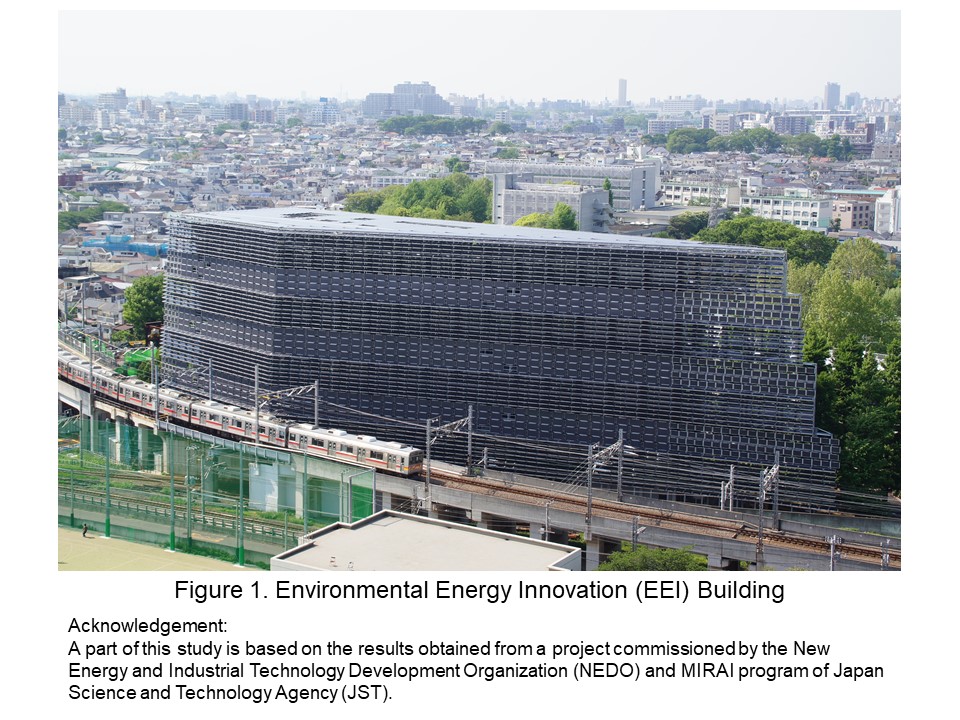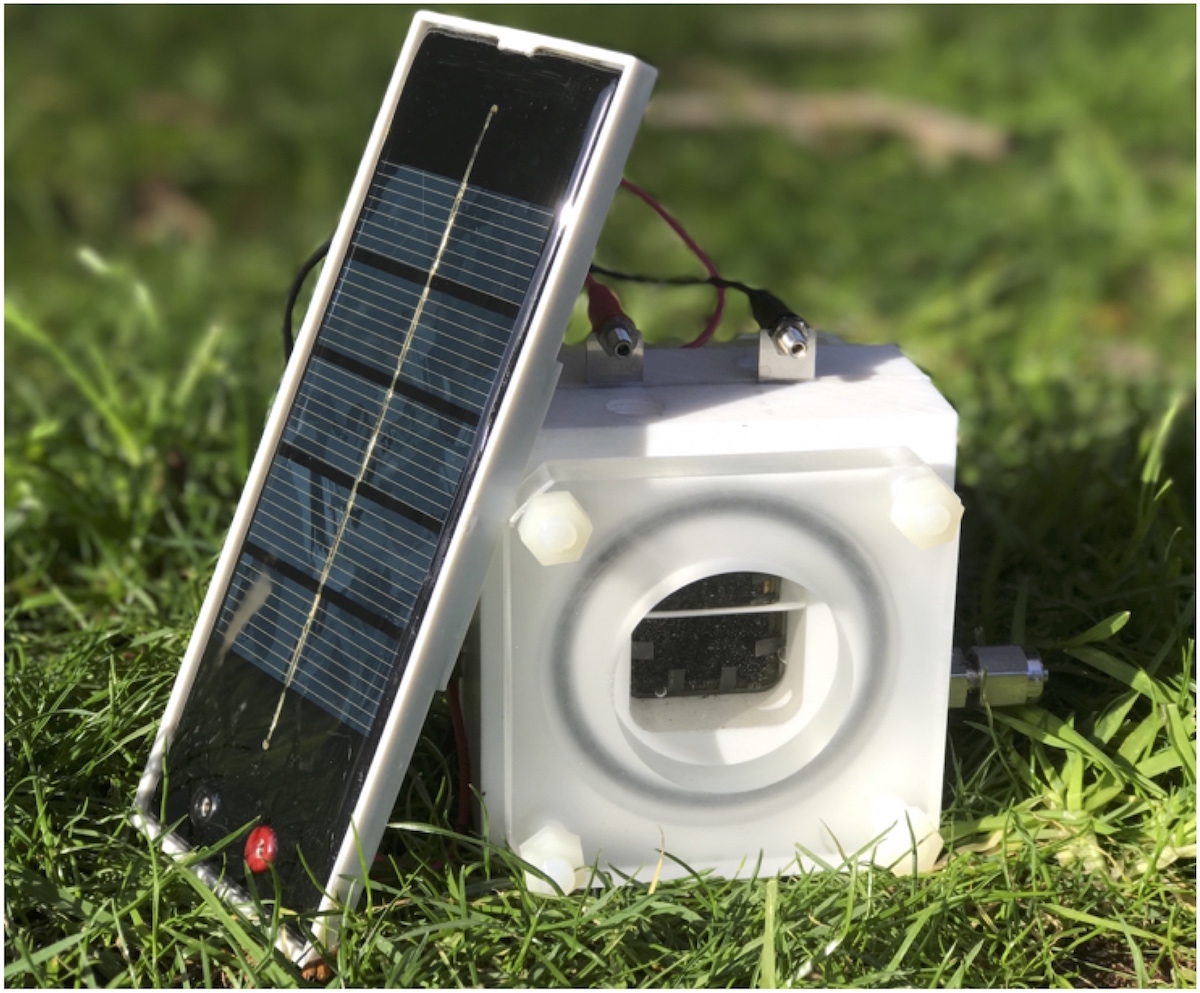
The power grid supplies electric power while maintaining 1. voltage, 2. frequency, and 3. transient stability, three conditions for stable power supply from the electric grid. However, recent large-scale implementation of solar cells has caused difficulties in meeting these conditions because of the power supply-demand gap. To solve this problem “leveling power”, the ability to keep the balance of supply and demand of power, is required. Although power has been leveled by power grid, the leveling by distributed energy system is also required. Energy storage technology is one of the methods to introduce power leveling in the distributed energy system. Combination of energy storage technologies, such as battery or Power to Gas (P2G), which converts power to hydrogen, is expected to contribute to the stability of power supply. Actual data with the range of minute to second is required to investigate the feasibility of each technology as power leveling.
In this research, firstly we analyzed the current status of power leveling required for power-grid by using actual generation and power demand data published by power companies across Japan and the actual data at Ookayama campus in Tokyo Institute of Technology. Smart energy system “Ene-swallow” installed at Ookayama campus accumulates power demand data in a second and solar generation data in a minute. Secondly, we calculated total supply-demand gap in the assumption of large-scale implementation of solar cells by using actual annual data in a minute from “Ene-swallow” and then we designed required amount of P2G system and battery for the leveling. The analysis showed that the total system cost could be reduced by using the combined system of P2G and battery.
[Acknowledgements] A part of this study is supported by the New Energy and Industrial Technology Development Organization (NEDO) and MIRAI program of Japan Science and Technology Agency (MIRAI JST).
Recently, the implementation of renewable energy, especially photovoltaics (PVs), has been rapidly expanded due to its significant cost decline with technology and market development. However, the supply fluctuation of renewable power sources makes keeping the balance of electricity demand and supply difficult. In order to make the best use of renewable power sources, the electricity demand-supply gap has to be balanced using energy storage technologies. Power-to-Gas (P2G), which converts electricity to hydrogen, is a promising candidate for a large-scale, long-term energy storage technology.
In this research, we analyzed the economic efficiency of distributed P2G system considering not only horizontal but also vertical installation of PVs. This analysis was carried out based on actual data accumulated in smart energy system “Ene-Swallow”. We used electricity demand data from the Ookayama campus in Tokyo Institute of Technology, and power generation data of PVs installed at the Environmental Energy Innovation (EEI) building, where PVs are installed on the rooftop, the south and west walls as shown in figure 1. We modeled the P2G system to simulate power generation and consumption at every hour of a single year, and to evaluate the total cost including the fixed and variable cost.
This analysis shows that if the price of each device decreases due to technology and/or market development in the future, appropriate implementation of a distributed P2G system will lower the total cost compared to the case where all of the required power was purchased from the power grid. This study also shows that in Tokyo area, appropriate combination of horizontal and vertical PV installation can lower the total cost compared to the case where only horizontal PV is installed. In addition, to discuss the feasibility of this analysis results, we investigated the possible installation amount of PVs at the Ookayama campus.

Photovoltaic (PV) cells powered water electrolysis cells (WECs) are capable of converting and storing the solar energy in the form of hydrogen (H2), thereby facilitating the continuous usage as well as distributing of this intermittent and diffusive energy resource (1). However, precious metal based catalysts are required to catalyse the two half reactions in WEC, e.g. Pt and its alloys for hydrogen evolution reaction (HER), and oxides of Ru and Ir for oxygen evolution reaction (OER), which has constrained the widespread applications of PV-WEC systems. Thus, advanced electrode materials for WECs that are active and cost-effective are highly sought after.
Herein, I will present some of our recent research progress regarding the development of advanced electrodes for WECs. These electrodes are mainly comprised of earth abundant elements, such as first row transition metals (Ni, Co, Mn, Fe) and/or carbon. For instance, by depositing mesoporous NiFe nanosheets onto the skeleton of macroporous nickel foam (NiF), a highly efficient, freestanding oxygen evolution electrode is prepared, showing hierarchical micro- to nanoscale porosities, and is among the most active in bases (2). Besides that, a Mn doped NiO/Ni heterostructured electrode (Mn-NiO-Ni/NiF) is also successfully synthesized. The prepared material is highly active for HER in both neutral electrolytes and natural seawater, exhibiting a Pt-like catalytic activity (3). A customised WEC was assembled based on the NiFe/Ni-F anode and the Mn–NiO–Ni/Ni-F cathode, which is highly active in splitting water, reaching a high current of 0.2 A at 1.8 V. Moreover, the WEC can be directly powered by PV cells tol enable the production of renewable hydrogen (Figure 1).
Reference
(1) X. Lu, et. al, J. Am. Chem. Soc. 2015, 137, 2901-2907
(2) X. Lu, et. al, Nat. Commun. 2015, 6, 6616
(3) X. Lu, et. al, Energy Environ. Sci. 2018, 11, 1898-1910

Automobile sales in China decreased by 2.76% to 28 million vehicles in 2018, that is the first decrease in the past 28 years. Market developments in New Energy Vehicle (NEV) including hybrid and pure electrical vehicles (BEV), as well as fuel cell vehicles (FCV) are inevitable and the number of NEV will break through up to 1.5 million vehicles in 2019. However, LIB with high energy density used in BEV is facing many safety risks with various faults and life issues due to less development accumulation in material process and manufacture. Meanwhile FCV is difficult to form into a mature commercial market, where many relative core materials and components are lower in quality and less reliable as compared with overseas products and most of them are depended on imports.
Shanghai AI NEV Innovative Platform upholds a critical function position for supporting industrial chain innovation, supporting R&D transformation to key products and servicing entrepreneurship in automotive field, by focusing on promoting the opening and coordination of innovative resources to reduce the cost of starting a new business. One of the major functions is battery material analytical service to give key solutions to safety, energy density and life of on-board LIB and to support developing high-performance FC stacks with low lost materials.
In this presentation, China's NEV policy, regulation, EV evaluation, material analysis situation will be explained and the function position of Shanghai AI NEV Innovative Platform will be introduced. Some LIB estimation methods and corresponding material analytical results relative to battery capacity (energy density), degradation (life), failure (warning) and exothermic (safety) items are given.